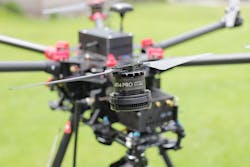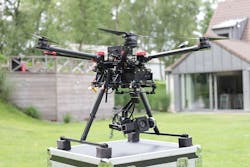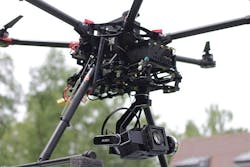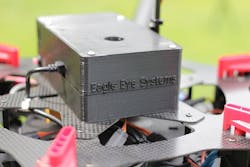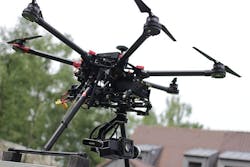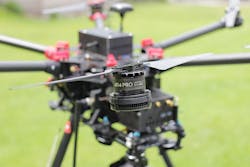Emergency management firm adopts Smart UAV operating system with tamper-proof tracking, NATO-standard security
BRUSSELS, 31 Aug. 2015. Officials at the Bergen County Office of Emergency Management (BCOEM) in New Jersey sought unmanned aircraft systems (UAS), also known as drones and unmanned aerial vehicles (UAVs), for emergency situations and search & rescue (SAR) operations. They found their solution at EagleEye Systems (EES) in Brussels, Belgium, selecting the company’s Smart UAV operating system to support their efforts.
BCOEM, the lead agency for preparedness, response, recovery, and mitigation across the county, performs a wide range of operations, such as flood, hurricane, and thunderstorm preparedness, traffic incident diversions, animal emergencies, and damage assessment and recovery. The Smart UAVs can search for missing persons or travel into hazardous locations to monitor and report on fires; they will not be used for undercover surveillance, officials say.
Unlike traditional drones, which are operated remotely, UAVs powered by EagleEye’s operating system can function autonomously – enabling users to strictly enforce no-fly zones, conduct accurate area coverage searches, and reduce the risk of human error, according to an EES spokesperson.
“Today we take a step into the future,” says Lt. Matthew J. Tiedemann, emergency management coordinator for Bergen County. “With this new generation of Smart UAVs, from EagleEye Systems, we will save lives while also adding efficiency to our emergency operations, which will also save money for our taxpayers. This is only the beginning, and we look forward to sharing further developments with you.”
A major factor in BCOEM’s selection of smart UAVs from EES was the company’s focus on security. Each EEV-powered UAV uses a NATO-standard secured link and a tamper-proof record of the machines' position and what the cameras detected – both of which reduce the risk of intrusion by hackers.
In addition to the UAV deployment, EES will provide BCOEM support to set up a robust flight department, pilot training, as well as the FAA COA process.
“While EagleEye has had success deploying our UAV platform in Europe, it is incredibly gratifying that we can now announce our first customer in the United States,” EES CTO Geoffrey Mormal explains. “This is the result of many years of development and perfecting our platform to meet the very high standards required by U.S. authorities, and we look forward to getting our first US UAV in the air soon!”
EagleEye was founded in 2012 by a team of entrepreneurs with a track record of building successful companies. Every company executive is a registered pilot as well, with ratings up to flight instructor. Advances in technology created an opportunity for a second-generation UAV, one with a brain on board that could make decisions based on real-time inputs from sensors and cameras, and that does not need a pilot to constantly oversee the mission as traditional UAVs do. This allows for missions with risk and precision requirements that are beyond a human pilot’s capability and at a total cost that is lower than traditional manned or UAV solutions.
After three years of development, testing and sensor integration, led by CTO Geoffrey Mormal, EES developed the EagleEye on-board expert system allowing the creation of behavioral rules based on sensor inputs, as well as providing a NATO-standard secured communications and operational multi-cast solution. EES has offices outside Brussels, in Wavre and in New York City.
